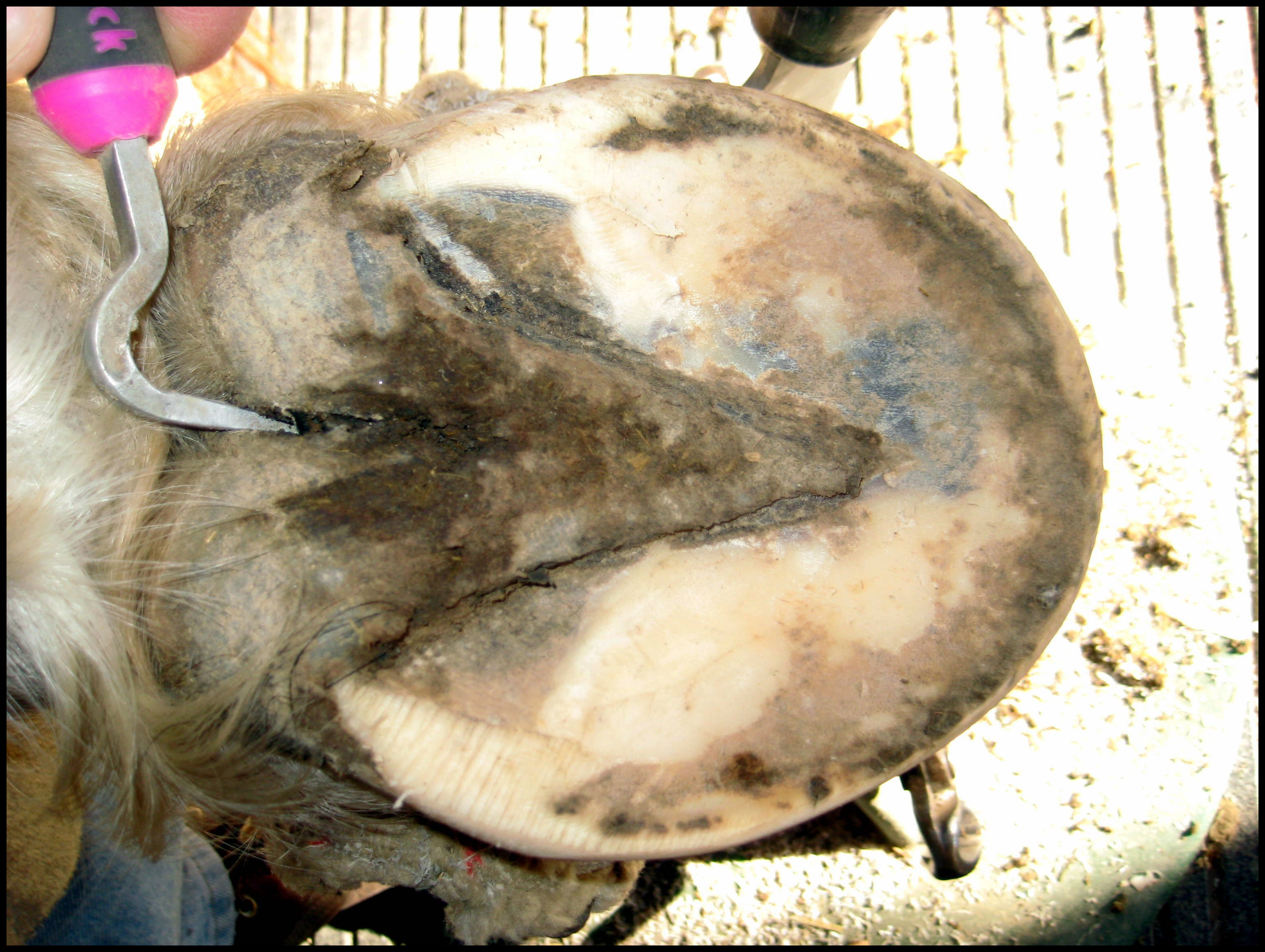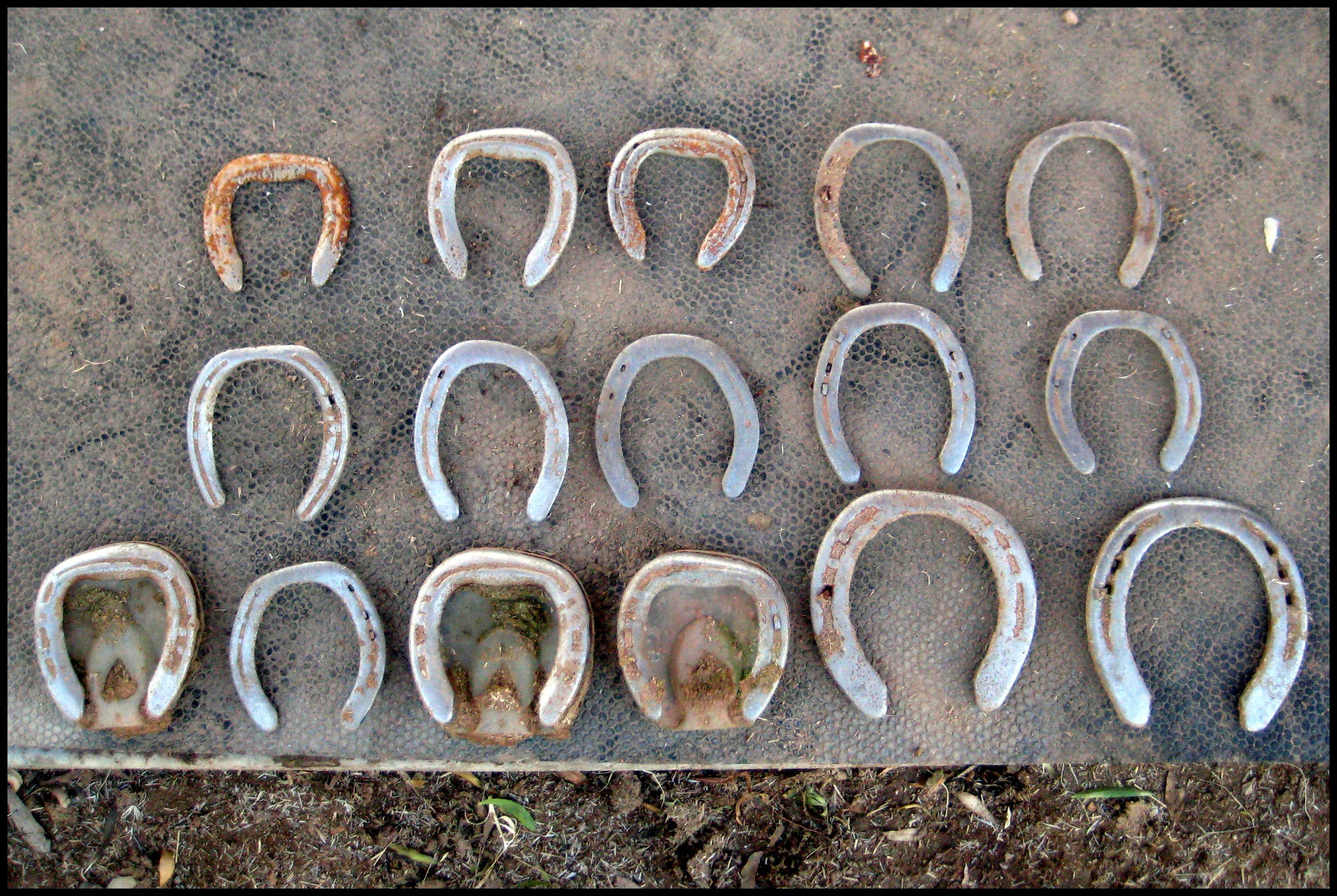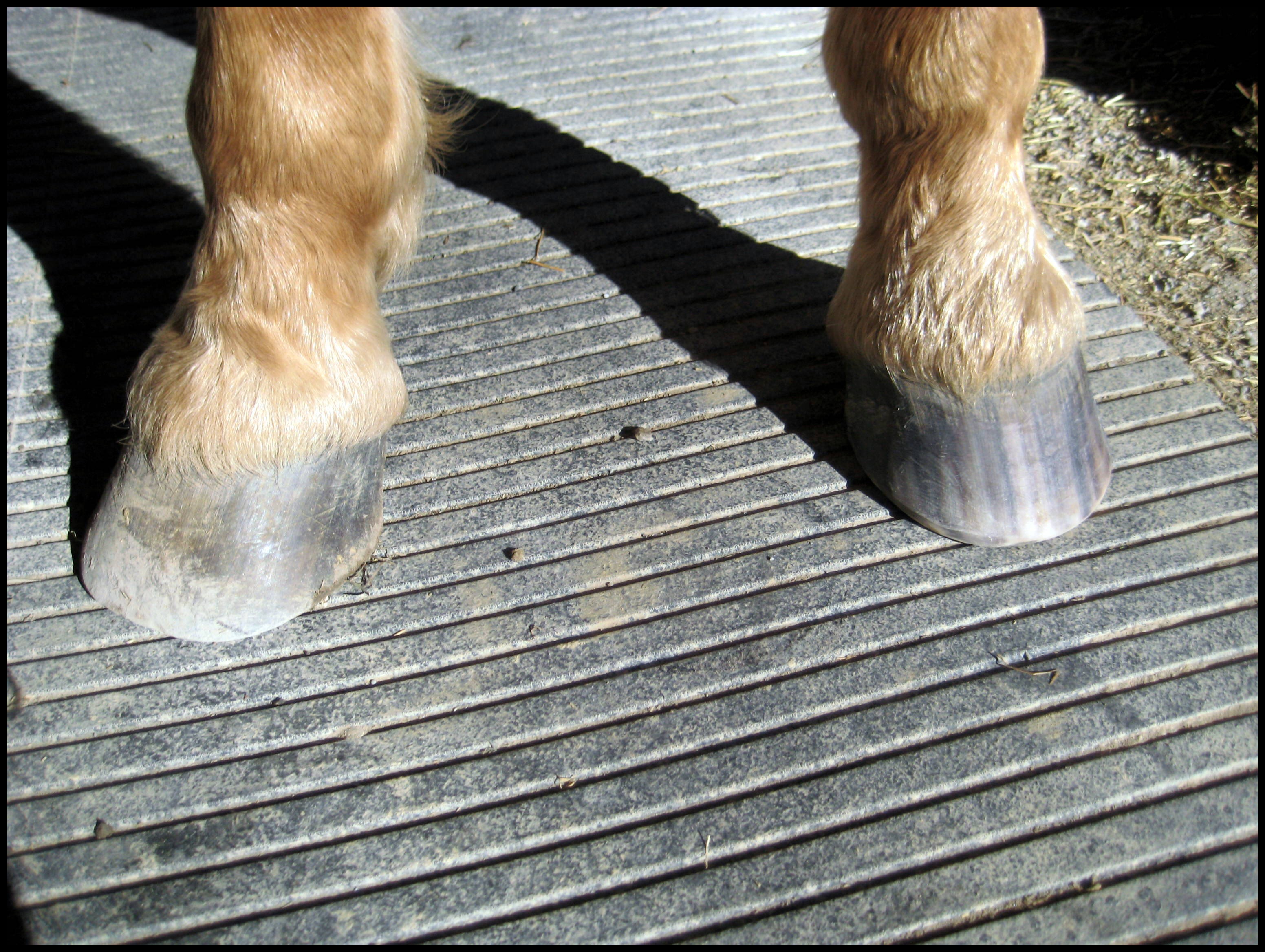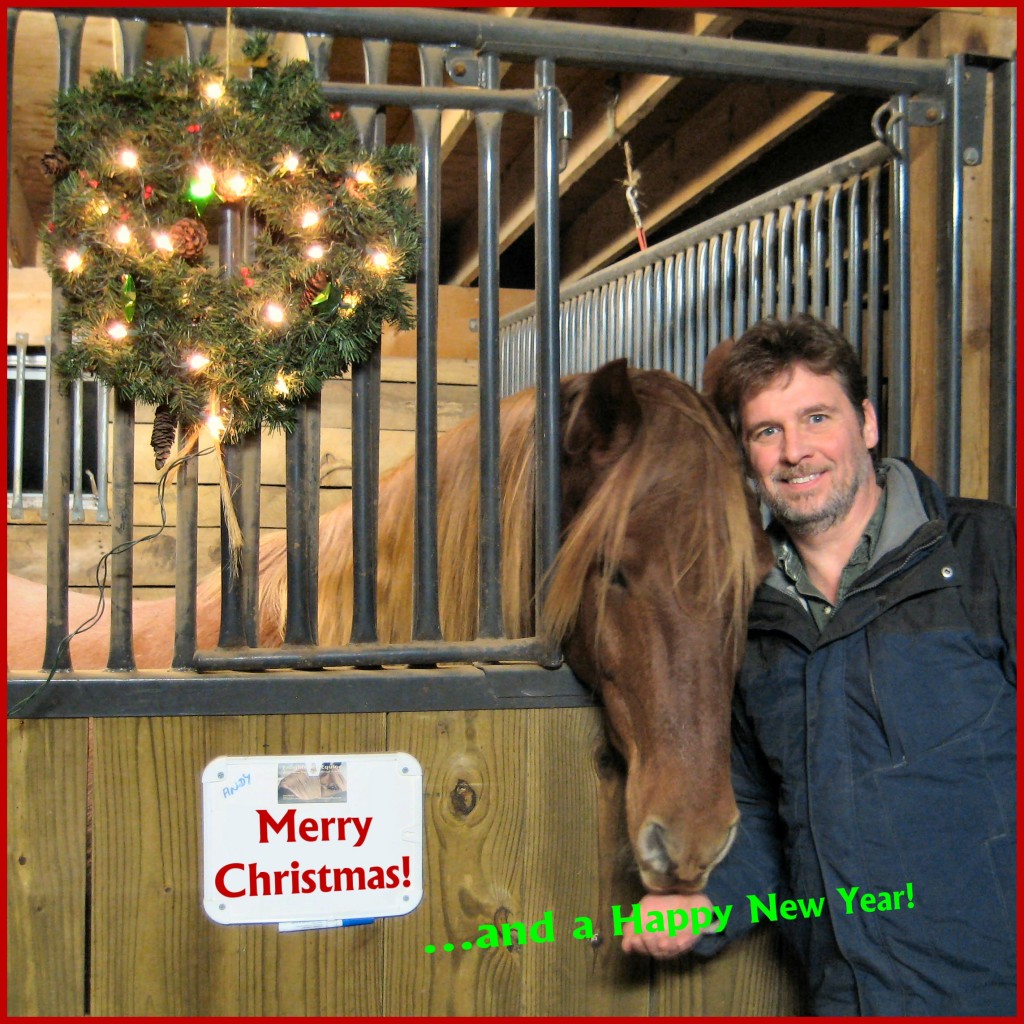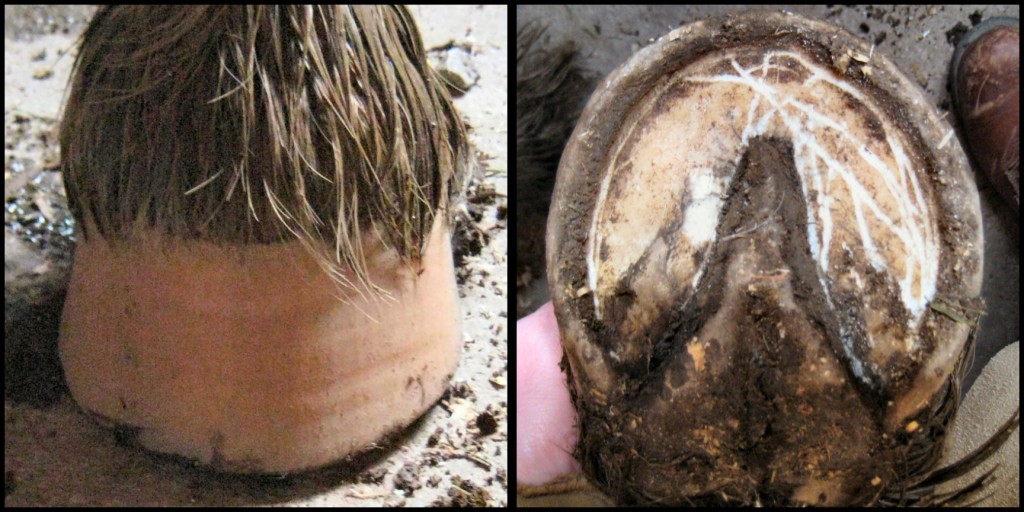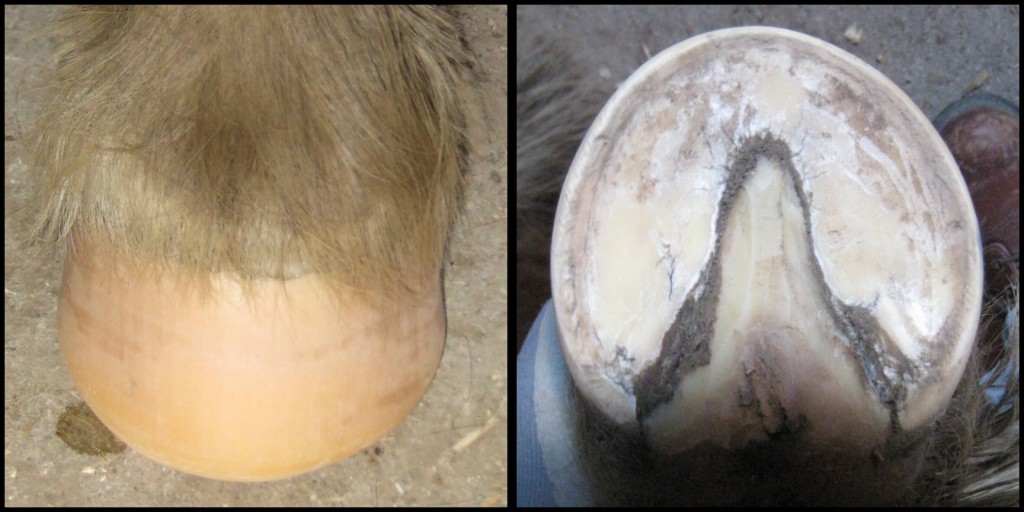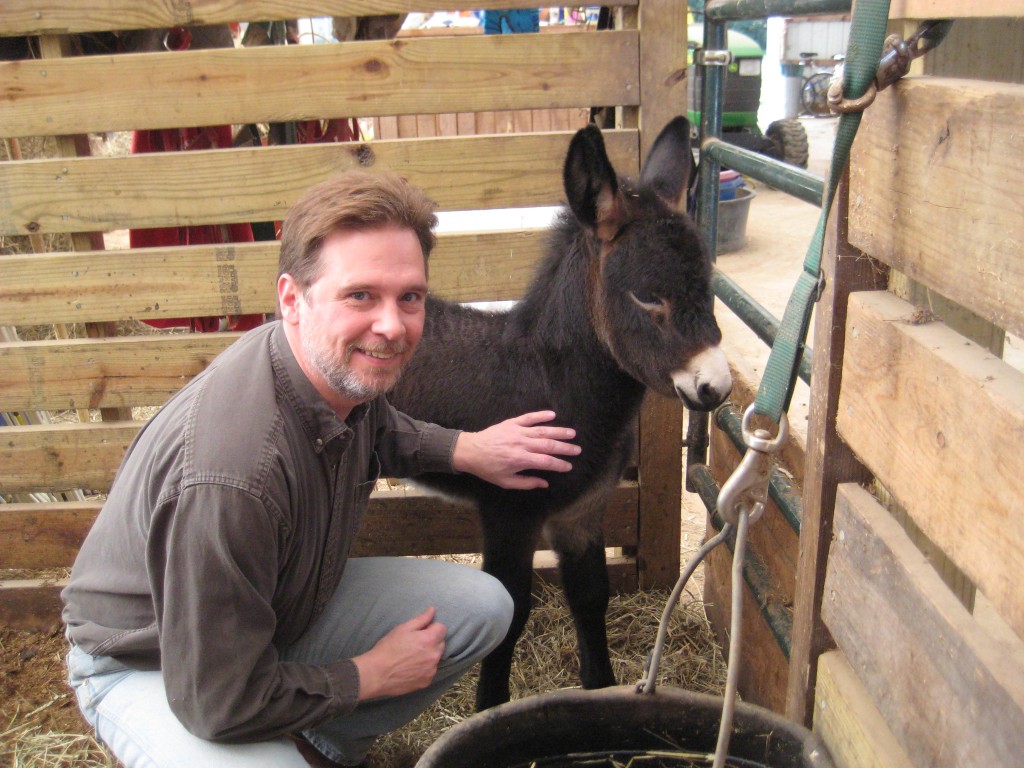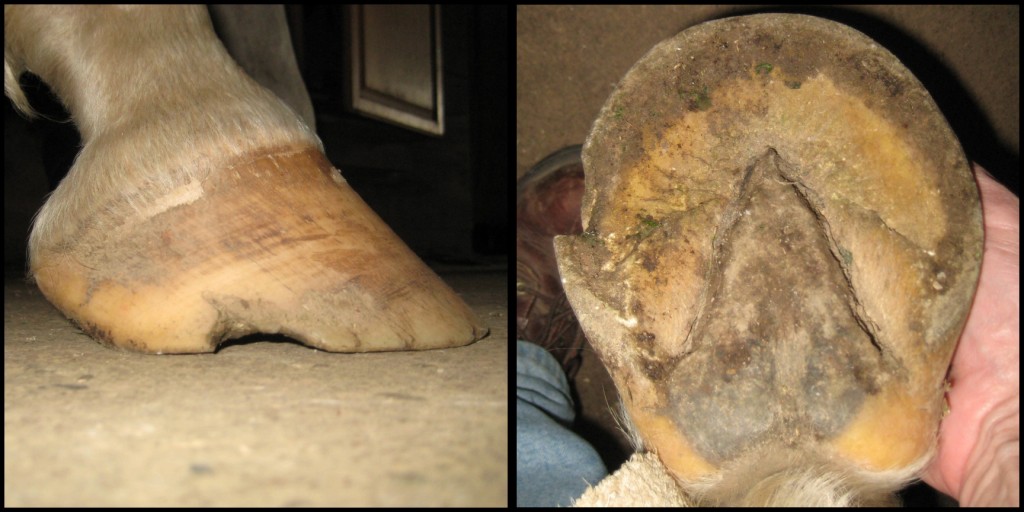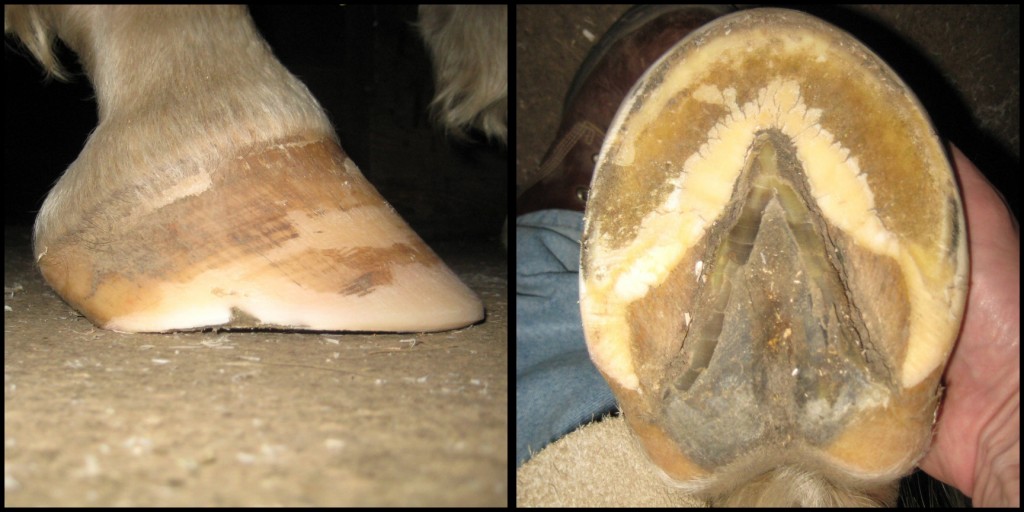Last weekend’s trip to Santa Fe proved to be an interesting one. I met some very nice people and some very nice horses. I also worked on some rather unusual horses with respect to conformation and movement, which I may comment about in the future.
Most of the horses I saw, like many I see here at home, have been chronically overtrimmed at the toe. This seems to be a pattern with many farriers. In fact, I once had an older farrier watch me trim a couple of horses, and then, to my amazement (at that time, anyway!), express surprise that I hadn’t cut into live tissue. When I asked him about whether or not he cut into live tissue, he said, “Always! That’s the way we’re trained.” That little exchange really opened my eyes as to why people often ask the farrier how long it’ll be before they can ride their horse after trimming or shoeing; live tissue has been violated, and they’ve become accustomed to their horse being sore for a few days afterward. This gentleman, by the way, is a graduate of a very old and generally well-respected horseshoeing school, and he’s certainly not the only farrier who routinely pares away the sole until it can be flexed with thumb pressure! Logically, what are the consequence of such an invasive procedure? Well, if a human can apply enough pressure with his or her thumbs to deform the sole, then what happens when a thousand-pound animal steps on a rock with that thinned sole? And when you thin the sole by removing live tissue, you’re also destroying the natural concavity of the hoof, which defeats much of the shock-absorbing properties of the foot. The poor horse just can’t get a break!
This is why one requires proper training to do successful barefoot trimming. Simply removing the shoes and trimming the horse as if you’re going to put a shoe back on him is almost certainly not going to work. And that same trim with the addition of a “mustang roll” isn’t likely to be successful, either. The reason why so many people think his or her horse can’t be without shoes is because the owner is unknowingly continuing the pattern of improper and invasive hoof care – just without shoes – and neither horse nor owner ever has the chance to experience the many benefits of true natural hoof care. The horse is lame, the owner is unhappy, and the shoes go right back on the horse! But back to Santa Fe…
Although all of the hoof work went very well, I’d like to comment about a horse I had an opportunity to see, but not trim. As I understand it, two veterinarians recently examined this horse and pronounced that the bones/joints of the lower limbs were correctly aligned, the horse had practically “model hooves,” and the farrier was doing a fine job. And while I agree with the first of those assessments, I couldn’t disagree more with the other two!
What I saw was a horse with otherwise healthy hooves but with very distorted hoof capsules. The reason the bones are in alignment is not because of anything particular the farrier has been doing; rather, it’s in spite of what the farrier has been doing. Like many horses, the heels have been left chronically too long. With every step any horse takes, the physical forces that shape the hoof are attempting to create what, for lack of a better term, I’ll call a “minimum-resistance” landing and breakover. As I’ve touched on in other posts, including The Shape of Things to Come and A Closer Look at Breakover, the lowest-impact hoof form is the one that facilitates a flat landing at a moderate walk, while the most-efficient breakover is the consequence of a short hoof with a rounded outer wall. For a couple of beautiful examples, see Functional Form.
When the forces of impact aren’t evenly distributed over the contact areas of the hoof (the heel buttresses and a horse-dependent region or regions at the toe), the hoof will respond by distorting its form. In this horse’s case, repeated concussion on hard terrain has literally bent the horse’s too-long heels so the hoof can land flat (hence, the bones/joints end up properly aligned). Here’s a quotation from an article by farrier John Scruggs entitled Hoof Balance – and Why Hoof Capsules Distort, in which he describes the symptoms and consequences of imbalance –
In order for a horse to stand, it must supply a force pushing up from the ground equal to or greater than the force of gravity that is pulling it down. Where these forces meet is the malleable medium with which [the farrier works] every day – the hoof capsule. When these forces are evenly distributed around the hoof capsule, there is no distortion. When there is an inequality in the distribution of force around the capsule (an area of the ground surface of the hoof capsule is higher/longer than necessary), the hoof capsule will distort until a state of equilibrium is reached….In order to equalize this greater load, the high portion will distort until it is loaded [equal to] the surrounding hoof horn. The action of this distortion in the hoof wall can be flare, separation, cracks, chips, crushed hoof horn, and/or contraction. Distortion is the hoof capsule’s only mechanism to equalize/normalize itself….The neat thing about all of this is that foot balance is not subjective. Feet are either distorted or they are not (emphasis added). If you have trimmed a foot in a manner that provides for a distortion-free capsule at the end of your shoeing interval, you have succeeded in balancing that foot for its conformation. If you get all four feet on the same horse distortion-free, that horse will “move” as well as its conformation, rider, and training will allow.
I couldn’t have said it better myself! In spite of what two veterinarians and a farrier may believe, this horse’s hooves clearly display several of Mr. Scruggs’ symptoms of chronic imbalance. And I’m not really singling out this particular horse, by the way; in my experience, the overwhelming majority of hooves exhibit one or more of these symptoms. But their absence does, indeed, indicate a horse receiving proper hoof care, and a horse that is thus able to move to the best of his or her ability.
Balance, balance, balance…as Mr. Scruggs says, it’s not subjective!




